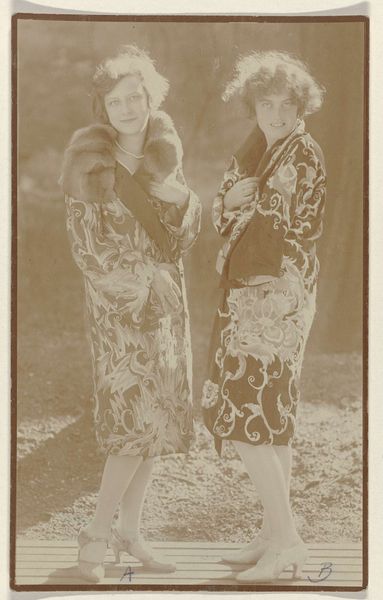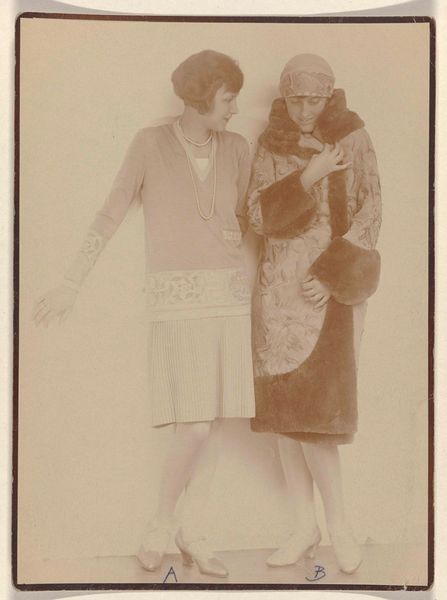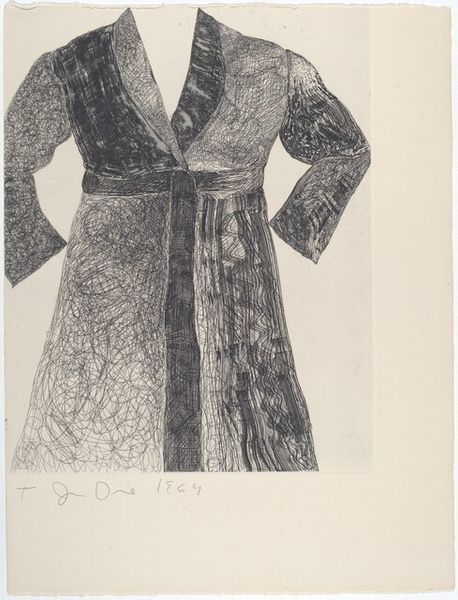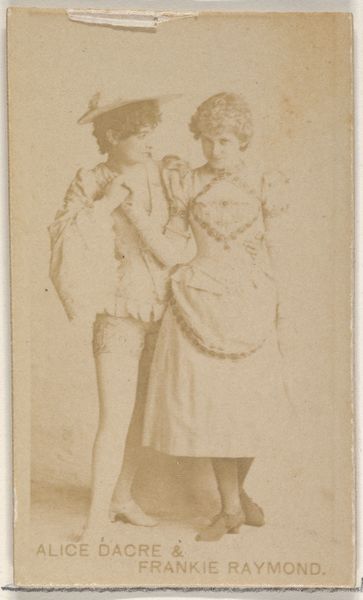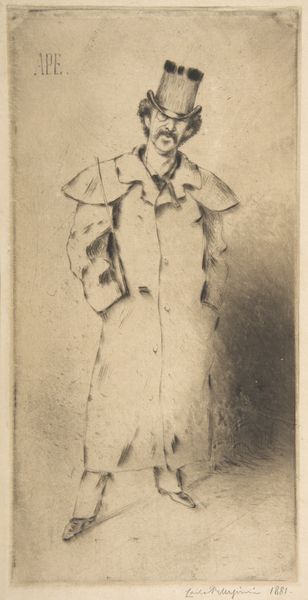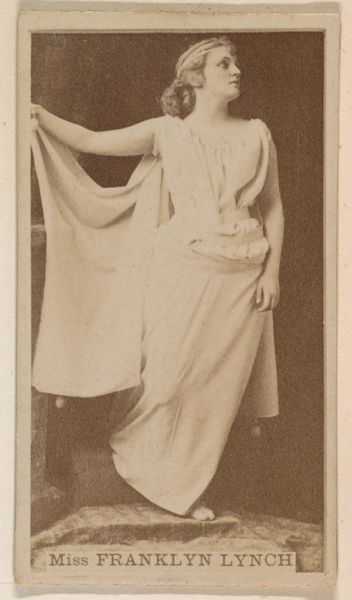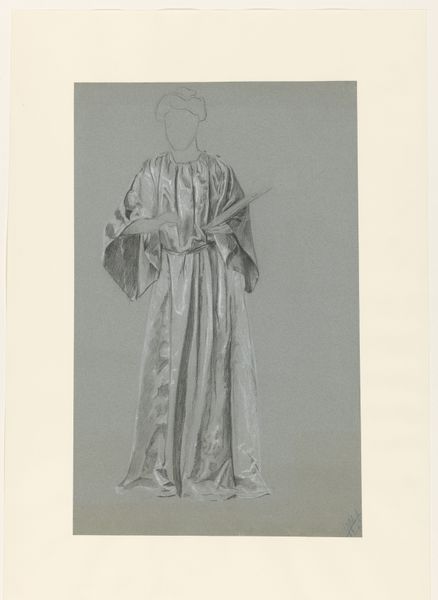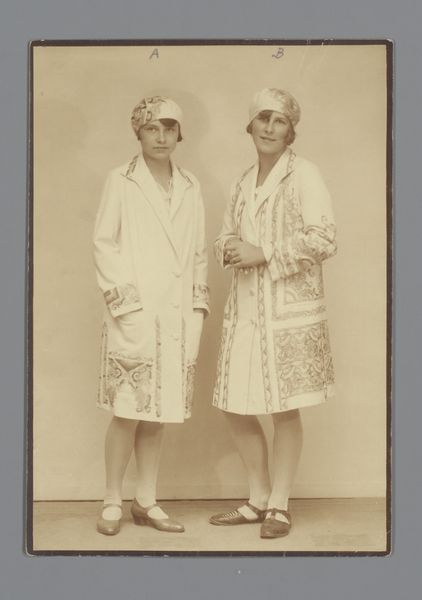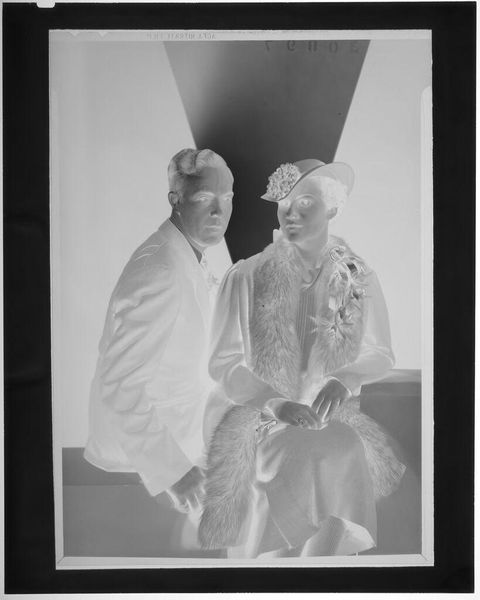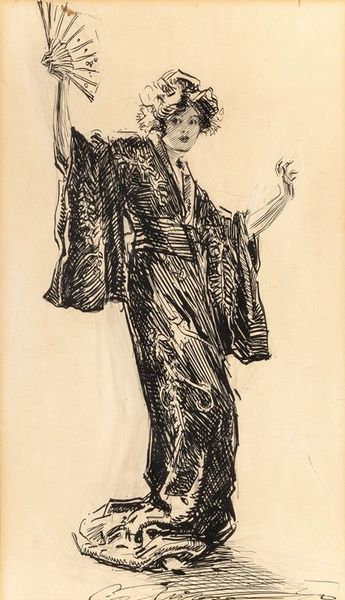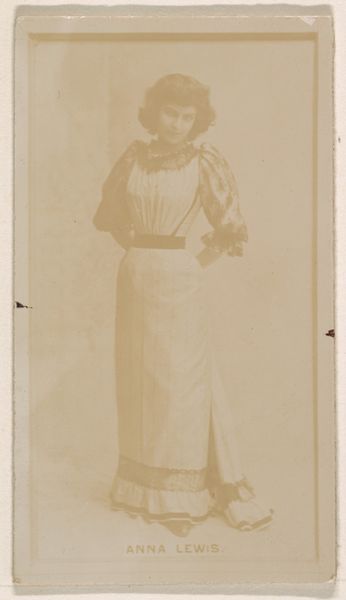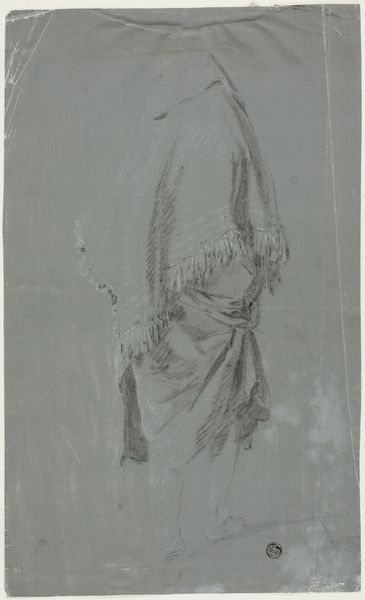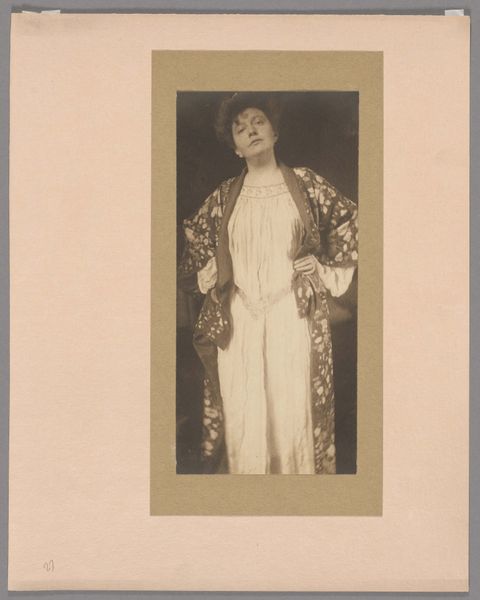
Twee modellen met een geborduurde omslagdoek van de Wiener Werkstätte 1920 - 1930
0:00
0:00
Dimensions: height 152 mm, width 100 mm
Copyright: Rijks Museum: Open Domain
Curator: Looking at this image, I see such delicacy; the floral motifs seem almost to float on the fabric. Editor: Indeed. What strikes me first is the inherent contrast. The photograph, simply titled "Two Models with an Embroidered Shawl from the Wiener Werkstätte," was produced sometime between 1920 and 1930. Here in the Rijksmuseum we observe two models displaying an ornate textile design. But beyond the aesthetic appeal, there are societal implications to explore. Curator: Absolutely. We're looking at the intersection of high fashion and artisan craft here. The Wiener Werkstätte, after all, was renowned for blurring these boundaries, elevating craft to an art form. These shawls weren't mere garments; they represented a conscious effort to revalue manual labor and design. Editor: Tell me more about its aesthetic structure and materiality, given the sepia tones washing across. I am curious about how the fringe operates within the plane and in dialogue with other planes... Curator: Notice the delicate, flowing lines characteristic of Art Nouveau, abstracted into softer forms, further refined in these works. And you have a point about materiality because the photograph captures texture itself—the very weave of the fabric, the drape, and those tantalizing fringes. These would have been luxury items produced for a specific clientele, and consumed accordingly. The fringe, as you noted, introduces a delightful textural counterpoint and dynamism to the plane. Editor: How do we interpret these women as part of that social context, and what of the conditions of workers that went into producing a single piece of embroidered work? Curator: We should certainly think about the labor. Embroidery work was meticulous, labor-intensive. What about the often nameless artisans whose skill and labor shaped these shawls? And the women posing as mannequins. Were they active consumers themselves, complicit within production chains they embodied, or were they merely actors in its commercial representation? We gain insight into a certain socio-economic ecosystem. Editor: So well put, seeing the shawl and this piece as interconnected pieces in a web that challenges traditional hierarchies. By seeing those tensions and textures, both real and represented, we better understand not just its beauty, but its purpose and placement within the complex landscape of design, labor, and representation.
Comments
No comments
Be the first to comment and join the conversation on the ultimate creative platform.
